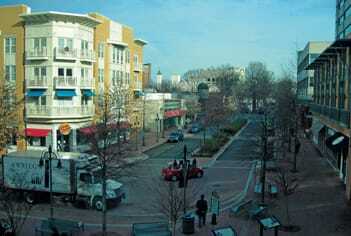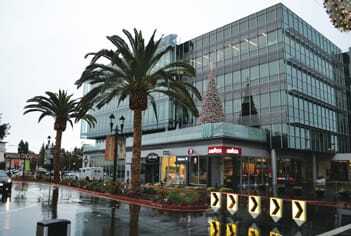Transportation referendums prospered in the November election, with 70 percent of those put to a vote winning. Voters approved 25 of 31 road spending measures and 13 of 19 initiatives for public transit funding, according to the American Road and Transportation Builders Association and the American Public Transportation Association. Two high-profile proposals, Measure J in Los Angeles and Measure B in Alameda County, California, gained broad support, but came one percentage point shy of the two-thirds majority required for passage in the state.
Within the bigger picture of public support for transit, some interesting tensions between rail and bus advocates could be found.
- In Los Angeles, the measure to extend the sales tax and accelerate completion of the city’s rail system was opposed by the Bus Riders Union, which claimed that this move would come at the expense of bus riders, a position they have successfully argued in court. This opposition may have had an impact on Measure J because the loss of even one percentage point of support was enough to send it to defeat.
- In Houston, a confusing ballot measure passed, extending the 1 percent sales tax that funds Houston Metro’s transit programs and allows the continued diversion of one-quarter of the revenue collected by that tax to local governments for street and road programs. An opposition group argued that killing the referendum would stop the diversion, allowing Metro to retain all funds for transit and continue the development of light rail. Houston Mayor Annise Parker called this a “flat lie” and claimed “the referendum will stop cannibalizing the bus system in order to support the light-rail lines.”
- Honolulu’s mayoral race became a referendum on a controversial elevated rail system planned to run throughout the city. Former acting mayor Kirk Caldwell defeated former governor Ben Cayetano, who had emerged from retirement largely with a goal of halting the 20-mile (32 km) elevated rail project. Cayetano, who preferred buses as an alternative, argued that the rail system would be too costly and intrusive while doing little to relieve the city’s worsening traffic congestion.
- One of the few major issues in the Arlington County, Virginia, race for a county board seat was a $250 million streetcar project intended to aid redevelopment of a deteriorating urban corridor, Columbia Pike. The Republican and green candidates for the office opposed it, and the incumbent Democrat, who had been on the fence, turned against it late in the race. Arlington County—favored by smart growth and transit-oriented development advocates, especially for its redevelopment of the Rosslyn-Ballston corridor—has proposed a vastly expanded transit service for Columbia Pike, preferring a streetcar-based alternative over a premium bus service that is $200 million cheaper.
The Role of Transit
Increasingly, transit is considered key to helping traditional automobile-oriented suburbs make the transition to pedestrian-friendly, mixed-use, livable communities. How big a role does it play? Wide variations in practice exist. A few examples of transit’s role—or failure to play a role—follow.
Transit is “just right.” This Goldilocks situation is probably unusual. Throughout the 19th century and early 20th century, the growth of street railways was closely tied to real estate development. Some entrepreneurs even financed money-losing streetcar systems with profits from real estate development. Among the more recent successes are such major redevelopment areas as the Rosslyn-Ballston corridor (facilitated by the presence of the Metro subway system), neighborhoods near particular stations in the San Francisco Bay area, and rail corridors in Denver, as well as a growing practice around the country of linking visions of regional growth to transit.
Transit is not enough. A site near transit is not enough, by itself, to ensure that development—or redevelopment—is a success. Examples of this include many locations near older transit, such as the Fruitvale station in West Oakland, California, and Silver Spring, Maryland. In such instances, intervention in the normal workings of the real estate market is required—through subsidies, incentives, and perhaps active redevelopment.
Silver Spring, for example, had several failed development proposals—including an inward-facing urban entertainment mall that failed to get financing—until a new county executive made redevelopment a key goal of his administration in the late 1990s. He hired a team of private developers to engage the community, eventually proposing a smaller-scale, street-based retail plan that calls for incremental development of the area—a proposal that received widespread community support, financial assistance for infrastructure improvements, and expedited permitting. The successful new town center, endorsed by a ULI Advisory Services panel, opened in 1998, two decades after Metro service began, showing that the presence of a transit station needed to be complemented by the basics of real estate and planning to create the right development.
Transit is not necessary. Surprisingly, many of the most widely recognized models of place making —especially in the suburbs—have compact, mixed-use centers with higher-density residential space, shared parking, and pleasant places to walk, but no transit. Examples include the following communities:
- Belmar in Lakewood, Colorado, is organized on a street grid that emphasizes pedestrian movement, with shops oriented closely to the street, 777,000 square feet (72,000 sq m) of retail space, 868,000 square feet (81,000 sq m) of office space, 1,048 residential units, and a cinema and hotel, along with community parks and plazas. It has been a major success, but is located on the west side of Denver, where there is no rail service today. The closest station of a planned 2013 extension of the light-rail system will be about 2.5 miles (4 km) away, which will involve a 12-minute bus trip plus a long walk. The site is served by a north–south bus line that operates every 30 minutes and by east–west buses that operate every 15 to 30 minutes in the afternoon and early evening.
- Santana Row in San Jose, California, in the heart of Silicon Valley, contains 680,000 square feet (63,000 sq m) of retail space and restaurants, 1,201 dwelling units, two hotels, and seven parks, all configured along a 1,500-foot (460 m) pedestrian-friendly main street with a central park to accommodate alfresco dining and entertainment. The site has convenient highway access, but transit service is limited to two bus routes, and it is not served by Santa Clara’s light-rail system, though that was part of the original plans. The nearest light-rail station is a 19-minute bus ride away, and local bus service operates every 30 minutes.
- At the Village at Shirlington in Arlington County, Virginia, a declining retail area was replaced by a mixed-use retail center surrounded by apartments and anchored by a new county library and a nationally recognized live theater. Expansion in 1995 of a retail/entertainment center that had replaced a deteriorating suburban mall added 644 apartment and condominium units and created a vibrant main street with 42,000 square feet (3,900 sq m) of additional retail space, including a strong mix of restaurants as well as a grocery store, and 195,000 square feet (18,000 sq m) of office space. The site is served only by bus at a terminal added at the edge of the project, and service is sparse for visitors: buses connect to a Metro rail station only every half hour.
All three of these projects were developed on the sites of dead or failing retail areas with limited transit service. They demonstrate that there are many important qualities of such town centers, but light-rail service—or even bus transit—does not need to be one of them. Rather, they require the basics of planning, development, and redevelopment to create attractive places.
The Bus Rapid Transit Alternative
Though light rail and streetcar service are clearly the sexy alternatives in development of livable communities with transit, an emerging option is the bus, especially a reimagined and rebranded one. Can proponents sell the bus option to retailers and developers, who sometimes believe that “rail passengers linger, while bus passengers loiter”? A new-generation smart bus service, known increasingly as bus rapid transit (BRT)—with higher speeds, better reliability, improved passenger comforts, and substantially lower costs—is improving transit and supporting redevelopment in cities where it is adopted. Ideally, exclusive BRT lanes are included in the service so that buses are not slowed by other traffic, and the buses are given preference at traffic signals. But many projects have been successful operating in mixed traffic mode—a “BRT lite” option—allowing automobiles and BRT to share the same lane.
Will developers buy into the idea? Maybe not in Houston, where the need to engage private developers was one of the rationales for the city’s first light-rail line, which opened in 2004 on Main Street, supported by a private sector that claimed Houstonians would use the bus service that was proposed as an alternative. A similar argument was presented in Arlington County, where a streetcar is proposed to support the redevelopment of Columbia Pike. The preferred alternative of county officials includes a bus system supplemented by a few streetcar routes so that three out of four transit arrivals will be buses.
County officials argue that the streetcar alternative would best support long-term private investment in transit-friendly development because the tracks are permanent, which inspires confidence among developers that the routes will not change the way bus routes do—an opinion based on the common misconception that a few opponents at a public hearing are usually enough to change a transit agency’s hard heart.
More important, it is the basics of the vision for development adopted by government officials that will get developers to commit. That vision includes the pedestrian-friendly street plan, the mix of uses, the presence of high-density residential space, the management of parking, and the overall appeal of the place. If the supporting transit is fully integrated into the development plan, functionally and financially, it should not matter if the service is bus or rail—even in Houston.



![Western Plaza Improvements [1].jpg](https://cdn-ul.uli.org/dims4/default/15205ec/2147483647/strip/true/crop/1919x1078+0+0/resize/500x281!/quality/90/?url=https%3A%2F%2Fk2-prod-uli.s3.us-east-1.amazonaws.com%2Fbrightspot%2Fb4%2Ffa%2F5da7da1e442091ea01b5d8724354%2Fwestern-plaza-improvements-1.jpg)


